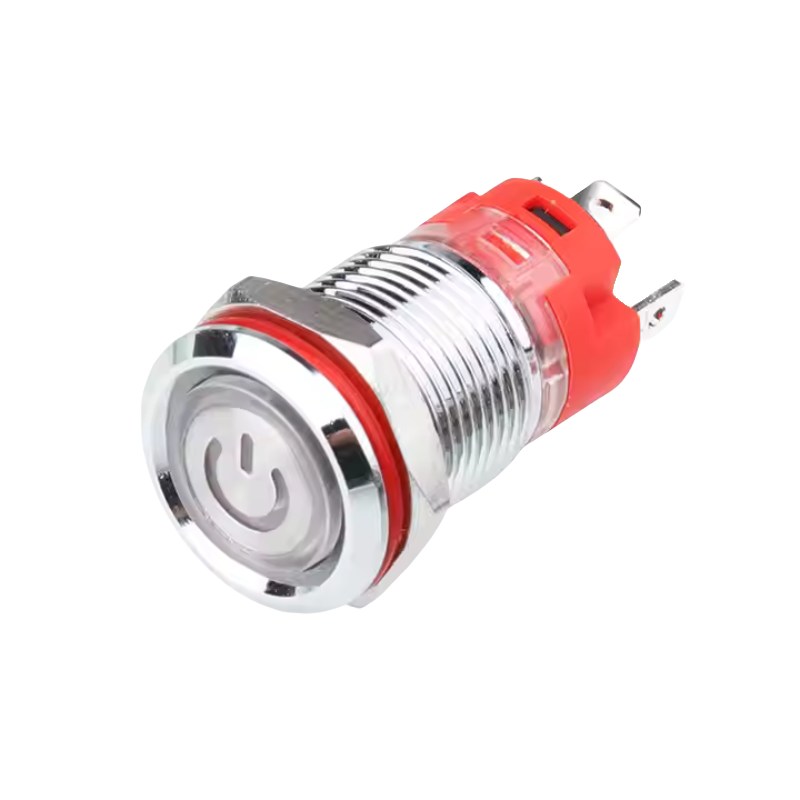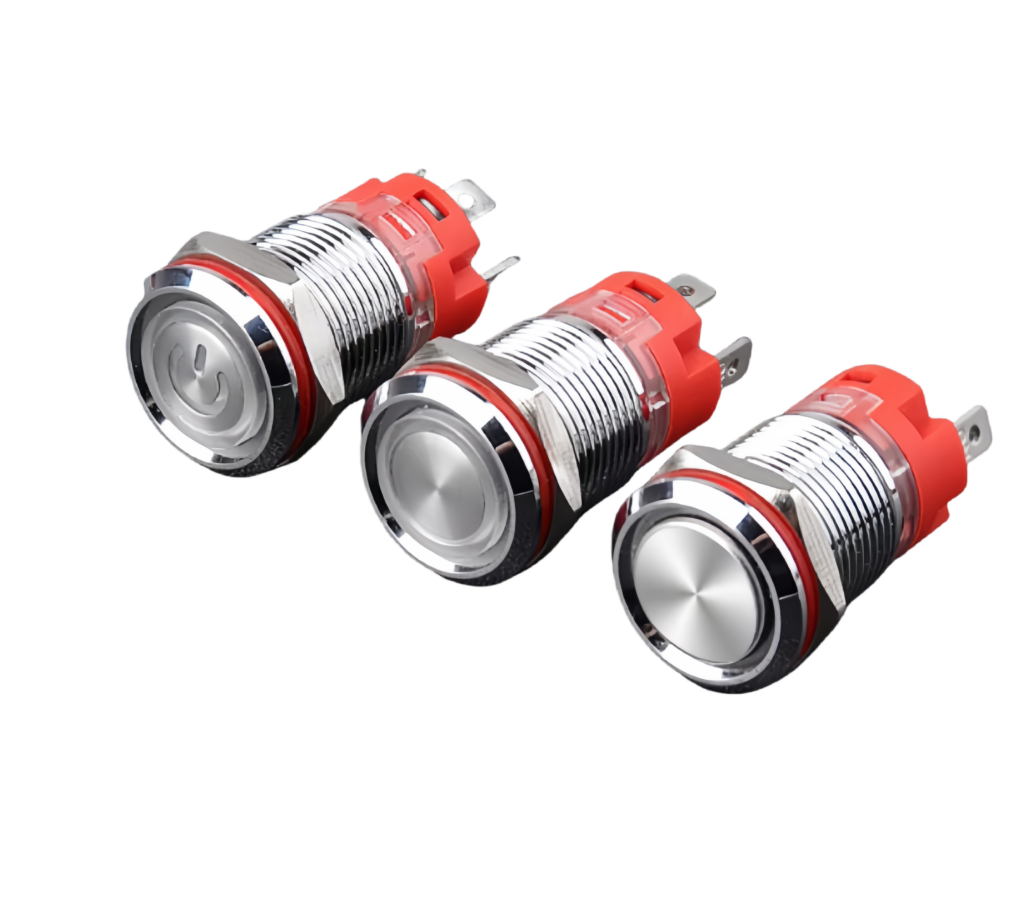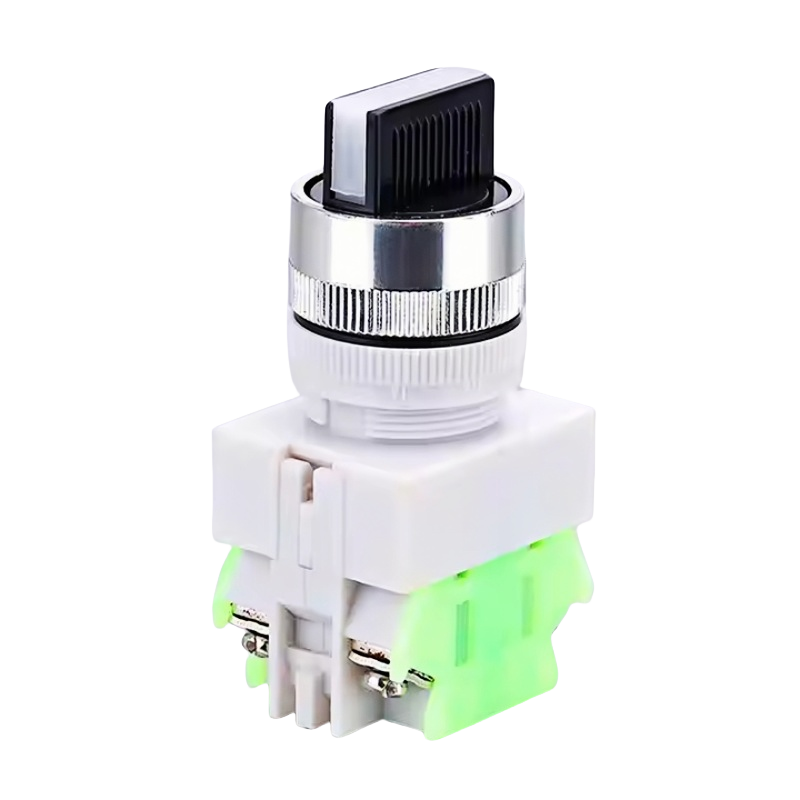In today’s world, where sleek touchscreens and voice commands dominate the tech landscape, it’s easy to overlook one of the most enduring and essential components in electronics — the metal push button switch. Despite its seemingly simple design, this small but mighty component plays a crucial role across countless industries, from industrial automation to home appliances.
But what makes the metal push button switch so special? Why has it remained relevant even as technology continues to evolve rapidly? In this article, we’ll explore the history, structure, benefits, and applications of the metal push button switch — and how it quietly powers our everyday lives.
A Brief History: From Mechanical Controls to Precision Engineering
The concept of a push button is centuries old, with early examples found in mechanical devices like pianos and telegraphs. However, the modern push button switch, especially in metal form, began gaining traction during the industrial revolution.
Originally made from brass or steel, these buttons were used primarily in factories and control rooms where durability was critical. Over time, advancements in materials science and electrical engineering allowed for more precise manufacturing, leading to switches that could handle higher voltages, resist corrosion, and be integrated into increasingly complex systems.
Today’s metal push button switches are far more than just on/off toggles. They’re precision-engineered components that combine mechanical reliability with visual feedback (like LED indicators), waterproofing, and even smart connectivity.
What Exactly Is a Metal Push Button Switch?
At its core, a metal push button switch is an electrical component that allows users to manually open or close a circuit by pressing a button. It typically consists of:
- Metal Actuator: Usually made from stainless steel, aluminum, or brass.
- Contact Terminals: These connect the switch to the rest of the circuit.
- Spring Mechanism: Returns the button to its original position after being pressed.
- Optional Features: LED lighting, waterproof seals, self-locking functions, and custom labeling.
These switches come in various sizes (commonly 12mm, 16mm, 19mm, 22mm, or 30mm) and configurations (such as momentary, latching, SPST, DPDT, etc.), allowing them to fit nearly any application.
Why Choose Metal?
While plastic buttons may be cheaper and lighter, metal offers several distinct advantages:
1. Durability
Metal push buttons can withstand thousands — sometimes millions — of presses without failure. This makes them ideal for high-use environments such as factory floors, elevators, or public transport controls.
2. Environmental Resistance
Many metal switches are rated for IP65, IP67, or even IP69K, meaning they can resist dust, water, and even high-pressure cleaning. This makes them suitable for outdoor use, food processing plants, or medical equipment that needs regular sterilization.
3. Aesthetic Appeal
Unlike their plastic counterparts, metal buttons offer a premium feel and look. Whether brushed, polished, or coated, they convey quality and sophistication — which is why you’ll often find them in luxury appliances, automotive interiors, and architectural lighting controls.
4. Tactile Feedback
One of the biggest selling points of a well-made metal push button is its tactile response. Users can feel when the button is activated, providing immediate confirmation without needing visual or auditory cues.
Types of Metal Push Button Switches
Metal push buttons aren’t one-size-fits-all. Here are some common types based on function and design:
Momentary vs. Latching (Self-Locking)
- Momentary Switches: Return to their original state once released. Think of a doorbell or horn — press and release.
- Latching (Self-Locking) Switches: Stay in the pressed position until pressed again. Commonly used for power switches.
Illuminated vs. Non-Illuminated
- Illuminated Buttons: Feature built-in LEDs for visibility in low-light conditions. Available in single-color or RGB options.
- Non-Illuminated Buttons: Used in minimalist designs or where light isn’t necessary.
Contact Configurations
Switches also vary in how they route electrical current:
- SPST (Single Pole Single Throw) – Simple on/off switching.
- SPDT (Single Pole Double Throw) – Can switch between two circuits.
- DPDT (Double Pole Double Throw) – Handles higher currents and multiple circuits simultaneously.
Where Are Metal Push Button Switches Used?
Thanks to their versatility, metal push buttons are used in a wide range of applications:
Industrial & Automation Systems
Factory machines, conveyor belts, emergency stop systems, and control panels rely heavily on durable metal switches. Their ability to withstand harsh environments makes them indispensable in manufacturing.
Automotive Industry
From dashboard controls to steering wheel buttons, metal push buttons offer a refined feel in high-end vehicles. Electric cars, in particular, have embraced sleek metal buttons for gear selectors and climate controls.
Home Appliances
Luxury ovens, refrigerators, and coffee machines often feature metal buttons for a premium user experience. Smart home devices, such as thermostats and lighting controllers, also integrate metal push buttons for tactile interaction.
Medical Equipment
Precision and hygiene are key in healthcare settings. Metal push buttons with sealed designs and antimicrobial finishes are commonly used in MRI machines, patient monitors, and lab instruments.
Public Infrastructure
Elevator call buttons, ticket machines, and vending systems frequently use metal push buttons due to their long lifespan and resistance to vandalism.
How to Choose the Right Metal Push Button Switch
When selecting a metal push button switch, consider the following factors:
Size
Common sizes include 12mm, 16mm, 19mm, 22mm, and 30mm. The size should match the panel cutout and intended use.
Voltage & Current Rating
Ensure the switch can handle the load of your circuit. For example, a 24V / 5A rating is typical for many general-purpose applications.
Waterproof Rating
For outdoor or wet environments, choose a switch with at least IP65 or IP67 protection.
Function Type
Decide whether you need a momentary or latching switch, and what kind of contact configuration (e.g., 1NO1NC, 2NO2NC).
Aesthetics
Color, finish, and illumination style can significantly impact the overall design of your product.
Trends and Innovations in Metal Push Button Switch Design
As technology advances, so too do the features and capabilities of metal push button switches:
Customizable Lighting
Modern switches now support RGB LEDs, allowing users to change colors via apps or voice assistants. Some even sync with ambient lighting systems for mood-based interfaces.
Smart Integration
Some models are designed to work with IoT platforms, sending real-time data about usage patterns or maintenance needs.
Eco-Friendly Materials
With sustainability becoming a priority, manufacturers are exploring recyclable metals and energy-efficient LED lighting.
Haptic Feedback
Newer switches incorporate vibration or sound feedback to enhance the user experience, especially in silent environments.
While the metal push button switch may seem like a minor part of the technological puzzle, its influence is widespread and enduring. From heavy industry to everyday household devices, it serves as a bridge between human intention and machine action.
Its combination of durability, functionality, and aesthetic appeal ensures that it remains a vital component in both traditional and cutting-edge applications. As design trends continue to favor minimalism and tactile interaction, the future looks bright for the humble metal push button switch.
So next time you press a button to start your car, turn on a light, or call an elevator — take a moment to appreciate the craftsmanship and engineering behind that satisfying click.




